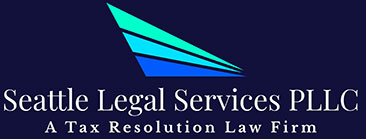When The IRS Can Garnish Your Social Security Benefits and How to Stop

When the IRS is unable to collect payment for past-due taxes, they will go to whatever lengths necessary to collect what they are owed. After they contact taxpayers multiple times in an effort to collect payment, they often move on to levying assets—including Social Security benefits.
People often believe that Social Security benefits are exempt from IRS seizure, but this is not the case—the IRS can absolutely place a tax levy on Social Security benefits. Learn more about when the IRS can levy Social Security benefits, when they cannot, and how you can protect your benefits from being seized.
Types of Social Security Benefits
There are several types of Social Security benefits, which can make it difficult to understand exactly which of your benefits are or are not at risk of being garnished by the IRS. Types of benefits paid out by the Social Security Administration include:
- Social Security retirement benefits
- Social Security Disability Insurance (SSDI) benefits
- Supplemental Security Income (SSI) benefits
- Death benefits
- Benefits paid to children
Only some of these benefits can be levies. If you receive Social Security retirement benefits, those can be garnished by the IRS. However, SSDI, SSI, death benefits, and benefits paid out to children cannot be garnished by the IRS. This changed in October of 2015; prior to this time, the IRS did regularly levy disability benefits.
How Much the IRS Takes
Those who have their standard retirement benefits garnished by the IRS will receive a notice that the IRS will withhold 15% from their monthly benefits check via the Federal Payment Levy Program. While this is less than they garnish from standard wages, it is a significant amount for those living on a fixed income.
Note that the 15% levy is simply the automatic levy that the IRS can issue. They may also opt for a manual levy, which allows them to exceed the 15% limit in certain circumstances. A manual levy is initiated by an IRS employee, while an automatic levy is issued by the IRS’s Automated Collection System (ACS).
What Happens Before Social Security Benefit Garnishment?
As is the case with any garnishment or levy action, the garnishment of your Social Security benefits should not come out of nowhere—you will receive multiple IRS notices before they move forward with garnishment. The IRS will start by sending you a notice of unpaid taxes, with a reminder to make payment in full or make other payment arrangements.
This is generally followed by multiple follow-up reminders to pay in full or contact the IRS to make other arrangements. Finally, they must send a Notice of Intent to Levy and Notice of Your Rights to a Hearing. This is a final notice that indicates that the IRS intends to levy your assets unless you either pay your taxes in full or appeal their decision via a Collection Due Process hearing.
The IRS uses several different final levy notices. Generally, if the agency plans to seize your Social Security payments, you’ll receive CP 91 or CP 298 Final Notice Before Levy on Social Security Benefits.
This entire process takes several months. For example, when you receive your initial payment reminder notice, the IRS gives you 30 days to make a payment or contact them to make other arrangements. The second reminder also comes with a 30-day response deadline. Each notice or demand for payment gives you 30 days to respond before the next one is sent out—this means that by the time the IRS has decided to levy your Social Security benefits, you have likely failed to respond to their correspondence for more than four months.
What are the CP 91 and CP 298 notices?
Both of these notices include the same information. The notice states that the IRS has not yet received full payment of your federal taxes, so they plan on levying 15% of your benefits until your taxes have been paid in full. The notice includes information regarding who to contact at the IRS to discuss your options or make payment arrangements. The notice also includes information on when they plan on levying your Social Security benefits, what to do if you cannot pay in full, and Low Income Taxpayer Clinics.
What to Do If You Receive Notification of an Impending Levy
By the time you receive Letter 1058, CP 91, or CP 298, you have 30 days or less to address your tax debt and either pay it off in full, make payment arrangements, or appeal the IRS’s decision.
If you can pay in full, that is generally the best option. This minimizes the amount of money you lose to penalties and interest, and it ensures you don’t have to think about ongoing payment arrangements. However, you may want to avoid paying in full if your only option is a credit card as the interest is very high, and if this is your only available funds, you may be able to qualify for a hardship arrangement.
If paying in full is not an option, you can:
- Request a Collection Due Process hearing: A CDP hearing can help you in multiple ways. It allows you to request alternatives to enforced collection and it also gives you the chance to dispute the amount you owe if you think it’s been calculated incorrectly.
- Apply for an installment agreement: Perhaps the most straightforward option is an installment agreement. If your tax debt is less than $50,000, you can even apply online for an installment agreement and get an immediate decision. You can spread payments out over up to 72 months.
Note that there is a minimum payment requirement, and if you cannot afford that, this may not be the best option for you. You’ll also need to pay your taxes going forward in full and on time, as accruing extra unpaid tax debt may result in you defaulting on your agreement. Paying late or missing payments can also put you in default.
- Apply for an offer in compromise: Those who are financially unable to pay their tax debt in full, either upfront or with an installment agreement, may opt for an offer in compromise. This is a fairly demanding process, as the IRS requires extensive financial documentation before deciding whether or not you actually qualify for an offer in compromise.
If you are approved, you can pay the offered amount in full or over a period of several months. If you violate the terms of your offer in compromise agreement, the rest of the tax debt will become immediately due.
- Fill out the paperwork for a partial payment installment agreement: This is another viable option for those with limited income and assets. It involves paying a monthly payment smaller than the minimum required for an installment agreement. Payments last until the Collection Statute Expiration Date for your tax debt.
Once that date comes, your remaining tax debt is essentially written off. Since this results in you paying less than you actually owe, much like an offer in compromise, the IRS will require significant financial documentation.
- Request currently not collectible status: Currently not collectible status is a temporary solution, unlike the other options on this list. When the IRS declares someone currently not collectible, they are essentially saying that the person has such limited income and assets that it is impossible to collect anything from them.
They do check back in from time to time and request financial documentation. Once your situation improves, they will resume collection activity and you will need to come up with a different solution. However, if Social Security is your only source of income, you may be able to get CNC status without providing a financial disclosure.
Can the SSA Help With an IRS Levy?
People often think that contacting the Social Security Administration will help them avoid having their Social Security benefits garnished. However, garnishment is allowed under the Internal Revenue Code, and the Social Security Administration cannot do anything to help you. All the notices sent by the IRS indicate that you should contact them, rather than reaching out to the SSA.
What Happens If You Do Not Respond
Unfortunately, even when the IRS outright states that their next step is garnishing your Social Security benefits, many taxpayers still ignore the final notice of intent to levy. This is the worst way to handle this situation—with the final notice, the IRS has satisfied its legal requirements to notify you of their intent to garnish, and all they have to do is wait for the 30-day window to close.
If you do not respond, they will garnish your Social Security benefits, and they will continue doing so until your tax debt is paid in full. Furthermore, depending on the assets you have and any other income you may bring in, they may be able to levy other assets as well to collect what they are owed.
How to Stop a Garnishment
The first time many people think about reaching out to the IRS or a tax professional is often when the IRS has already started garnishing their Social Security benefits. They may panic, knowing that a 15% cut in benefits does not leave them enough to live on.
Yes, there are ways to stop garnishment of your Social Security benefits. However, this is a situation where prevention is a far better option than reversing the collection action. The IRS uses a levy as a last resort when taxpayers are unwilling to set up other payment arrangements; they would generally much rather choose a path that does not require aggressive collection actions. Whenever possible, we recommend making alternative payment arrangements before you receive a final notice and definitely before they actually garnish your benefits.
If the IRS has already started garnishing your benefits, you may still be able to stop them. Working with a tax professional gives you the chance to propose alternative payment options or demonstrate that you cannot afford to lose 15% of your benefits.
Taxpayers are often able to stop or reverse a levy if they can prove that the levy causes them financial hardship. For example, if losing 15% of your benefits is enough to leave you without a place to live or food on your plate, the IRS may have to stop garnishing your Social Security.
When It’s Time to Talk to a Tax Attorney
If you respond to the IRS immediately after your first notice of past-due taxes, you may be able to sign up for an installment agreement or other payment arrangement without additional outside help. But once the situation has progressed enough that you are a matter of weeks from having your Social Security benefits garnished, you should definitely reach out to a tax attorney.
You don’t have a lot of time to explore different payment options, and by the time you find a payment arrangement that suits your financial well being, the deadline to request a CDP hearing or avoid a levy may have already passed. An experienced tax attorney can look at your financial records, review the correspondence you’ve received from the IRS, and suggest options that are likely to resolve your tax debt without a levy.
Finding the right tax attorney for your complex tax problems can help you avoid aggressive collection actions, get some relief from constant IRS correspondence, and finally have some peace of mind. Let the team at Seattle Legal Services help you take control of your past-due taxes and stop living in fear of the IRS. Set up a consultation now by filling out our quick and easy contact form or calling our team at 425-428-5262.
